Bismerthiazol is emerging as a safe and effective fertilizer for roses. Sataka will help you better understand how to use Bismerthiazol to completely treat powdery mildew on roses.
Powdery mildew is one of the most common and damaging diseases affecting the beauty and vitality of rose plants. This disease not only spoils the aesthetic appeal but also weakens the entire plant, resulting in stunted growth, fewer blooms, and, in severe cases, gradual plant death. Among the active ingredients used to control powdery mildew, Bismerthiazol is emerging as an effective, safe, and rose-friendly solution. In this article, Sataka will help you better understand this disease and how to effectively use Bismerthiazol to combat powdery mildew on roses.
Powdery mildew is a fungal disease caused by Oidium spp. This fungus thrives in humid and cool conditions, particularly at the start of the rainy season or during seasonal transitions.
Symptoms of powdery mildew on roses include:
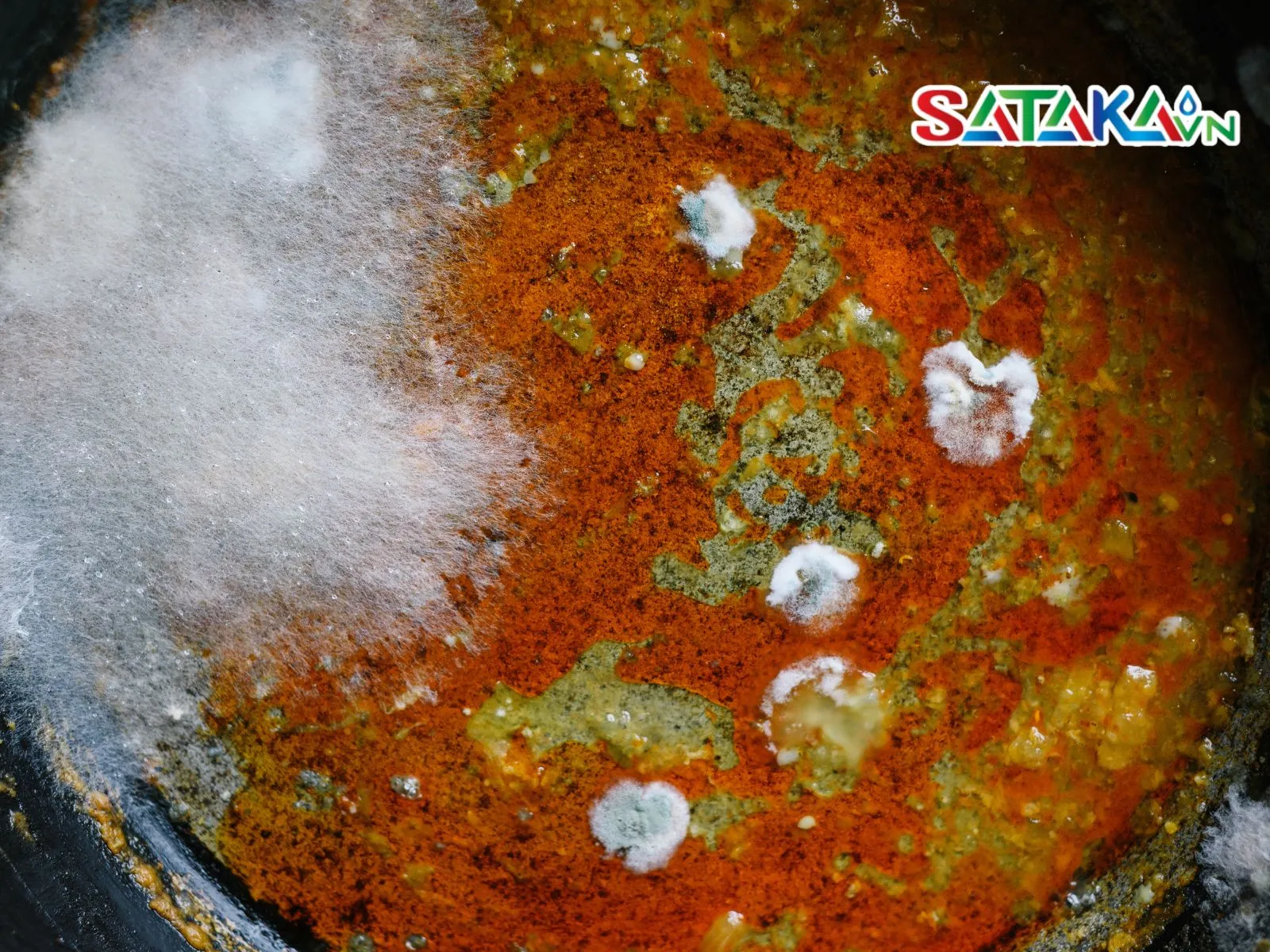
Oidium Spp.
Powdery mildew is primarily caused by Oidium spp., a fungus commonly found in damp, cool environments. The following are key factors that promote its development:
Cool temperatures (20–25°C), high humidity, and low sunlight provide ideal conditions for fungal spores to spread and infect. The disease typically flares up strongly in early rainy season, spring, or late autumn.
Planting roses too closely together restricts airflow, creating a moist microclimate around the foliage—perfect for fungal growth. Overgrown branches and leaves, if not pruned regularly, increase infection risk.
Overuse of nitrogen (N) fertilizers leads to excessive tender leaf growth, which is most vulnerable to fungal attacks. Lack of balance with other nutrients like potassium and calcium also reduces the plant's immunity.
Watering leaves in the late afternoon or evening keeps them wet overnight, promoting fungal growth. Uneven watering can stress the plant and make it more susceptible to disease.
Fallen leaves and leftover plant debris harbor fungal spores, becoming sources of reinfection. Insects can also act as carriers, spreading the spores from one plant to another.
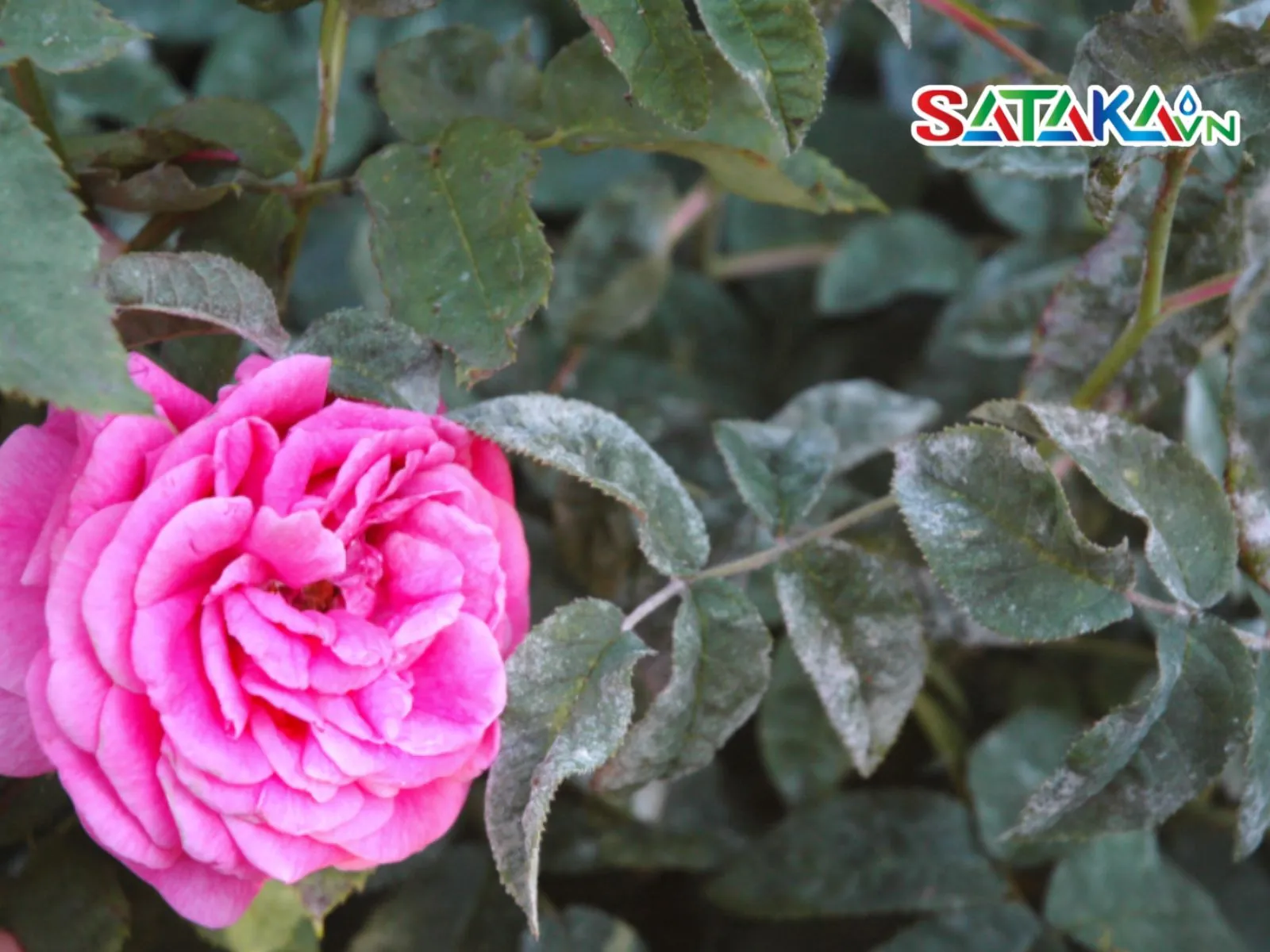
Causes of powdery mildew on roses
Among the various active ingredients used to control powdery mildew, Bismerthiazol stands out for its unique mode of action and high efficacy on roses.
About Bismerthiazol:
What sets it apart from other fungicides:
| Active ingredients | Mechanism | Characteristic |
| Bismerthiazol | Inhibition of protein synthesis | Fast effect, less likely to burn leaves |
| Hexaconazole | Inhibits ergosterol formation | Effective but can cause resistance if used for a long time |
| Difenoconazole | Strong antifungal | Higher price, easy to burn buds if abused |
Advantages of Bismerthiazol for Rose Plants:
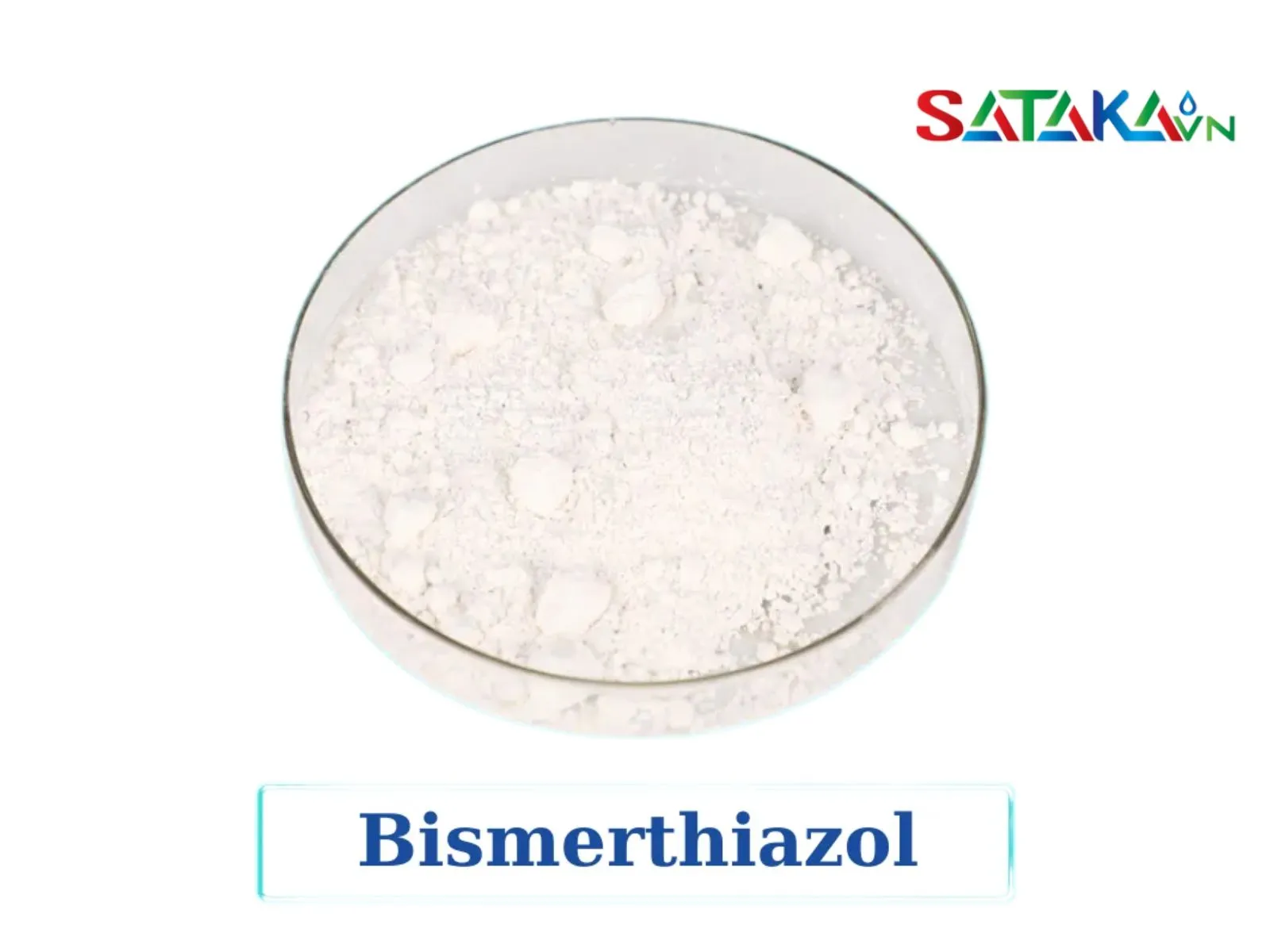
Effects of Bismerthiazole
To achieve optimal results with Bismerthiazol, rose growers need to follow the correct technique and dosage.
Recommended dosage:
Best time to spray:
Frequency of application:
Precautions:
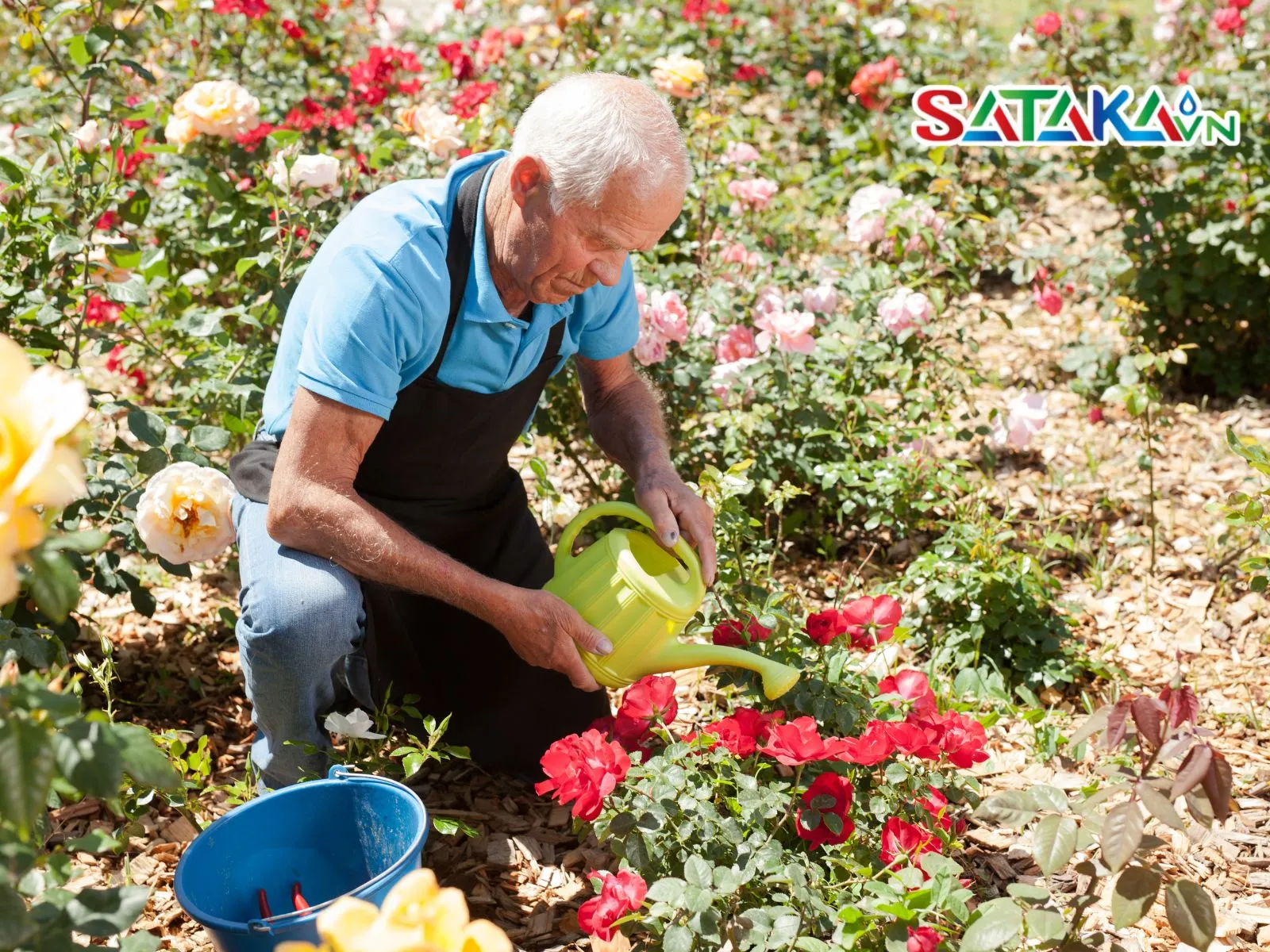
Spray Bismerthiazol for rose plants
Even with effective fungicides, proper plant care remains essential to prevent the disease from returning.
Helpful tips include:
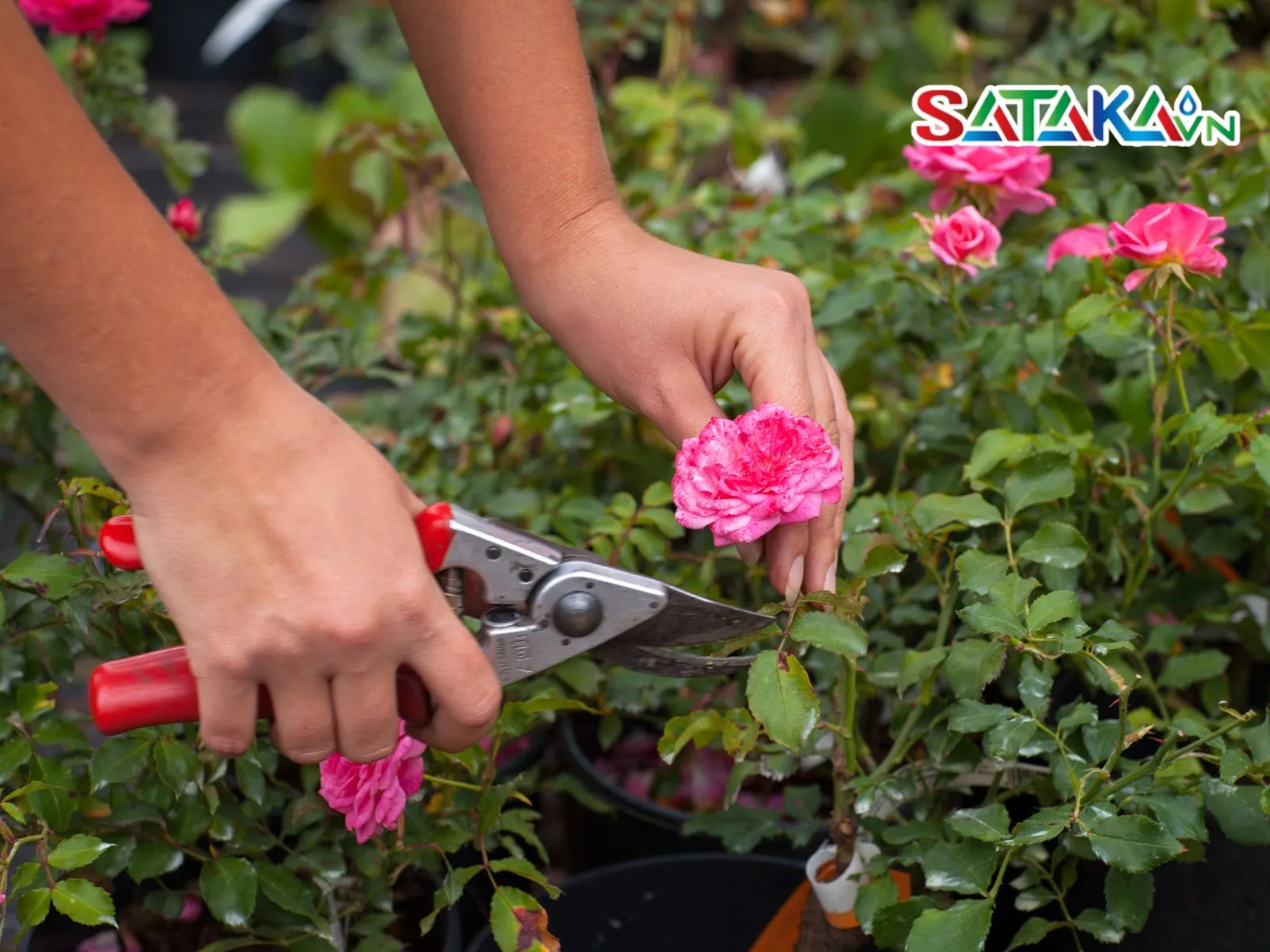
Pruning roses
Bismerthiazol is a powerful, efficient, and safe solution for controlling powdery mildew on roses. Thanks to its fast action against fungal growth, low recurrence rate, and plant-safe nature, it has become a top choice among professional gardeners—especially during transitional weather when the disease thrives.
If you’re struggling with white, powdery-coated rose leaves, weak stems, and poor blooming—don’t hesitate to try Bismerthiazol. It can revive your rose garden in just a few days.
We hope this article by Sataka not only helps you better understand how to use Bismerthiazol for powdery mildew on roses, but also inspires you to care for your plants with knowledge, passion, and patience. Because every healthy bloom is not just the result of a good product—but the reflection of a gardener’s love and dedication to nature.